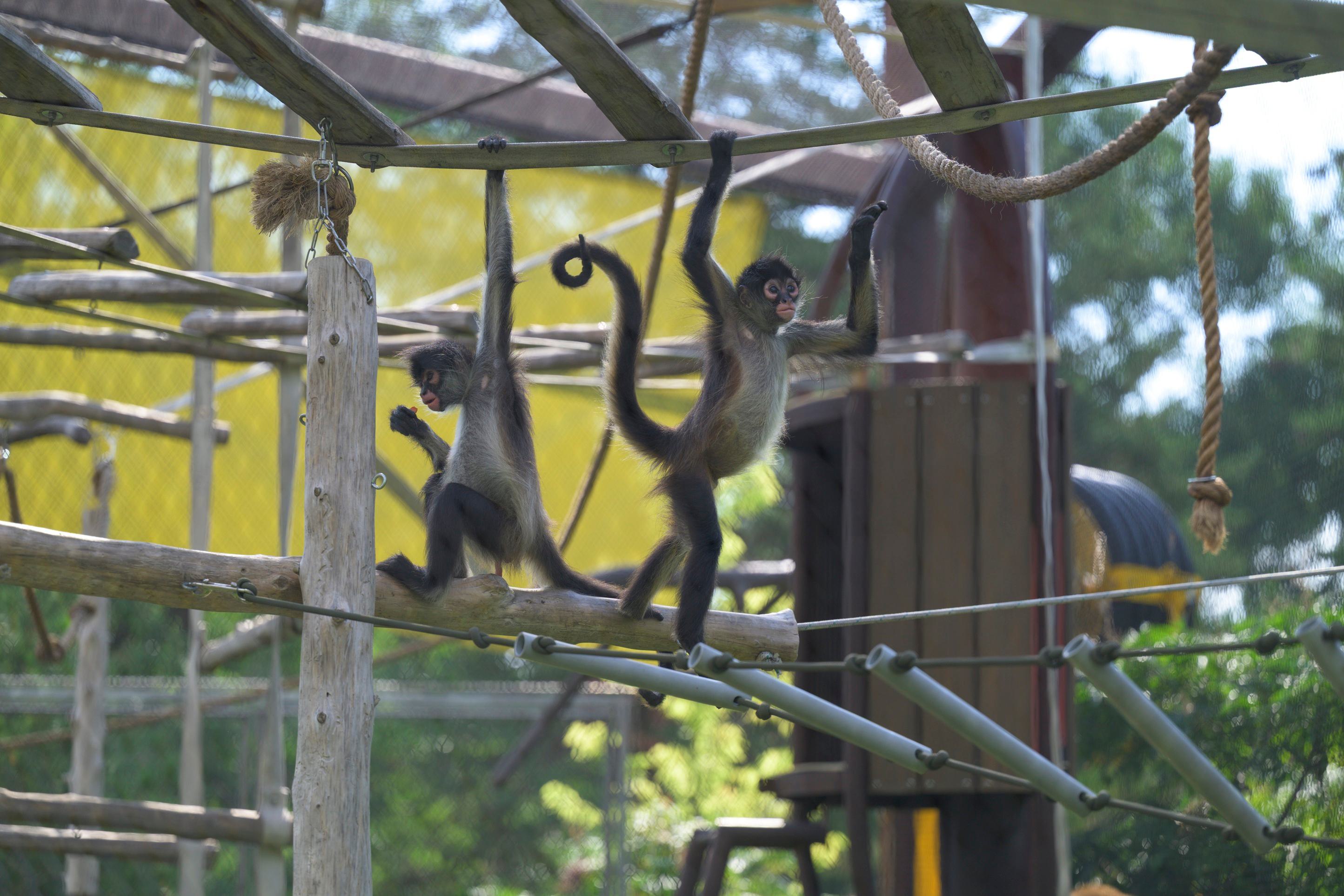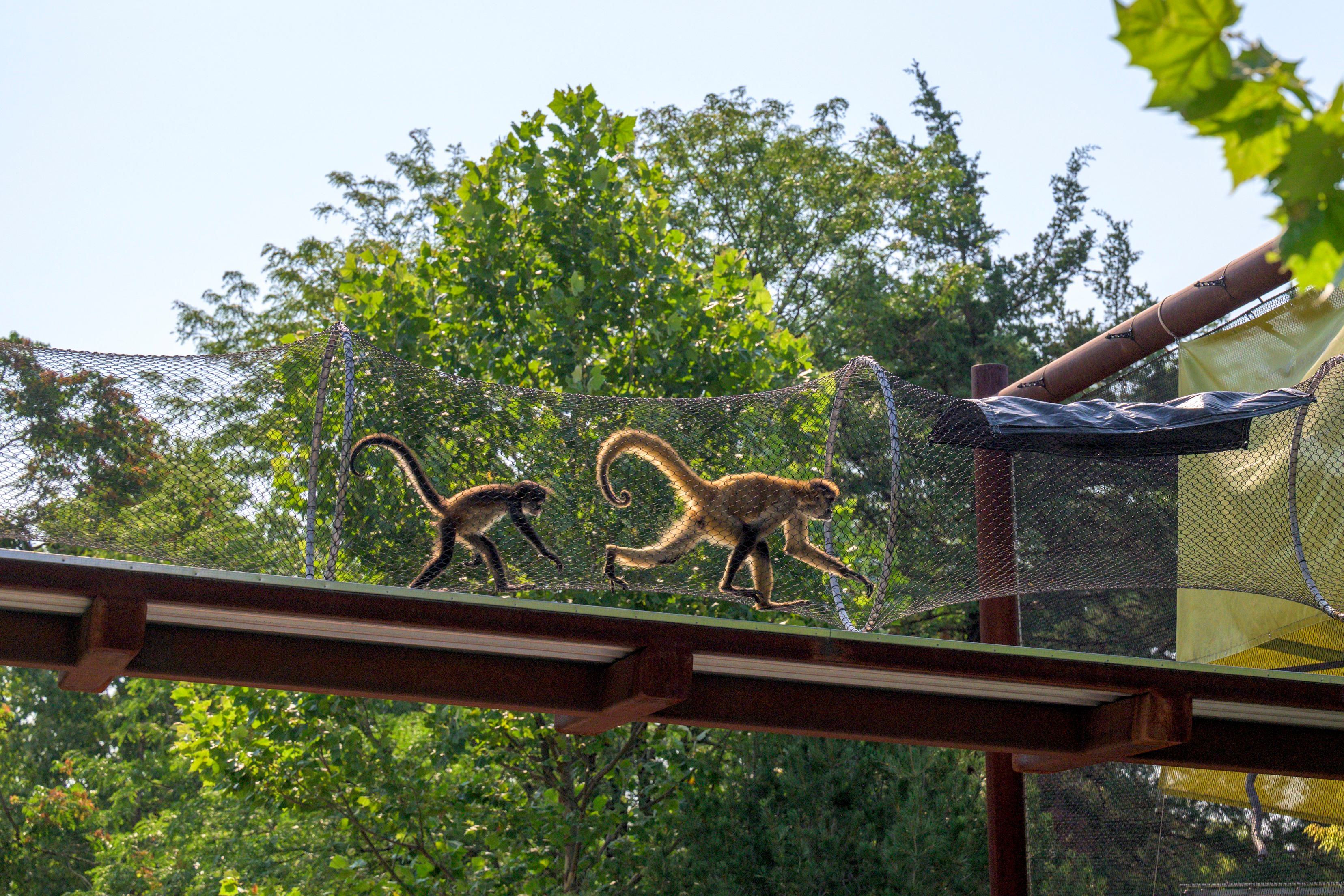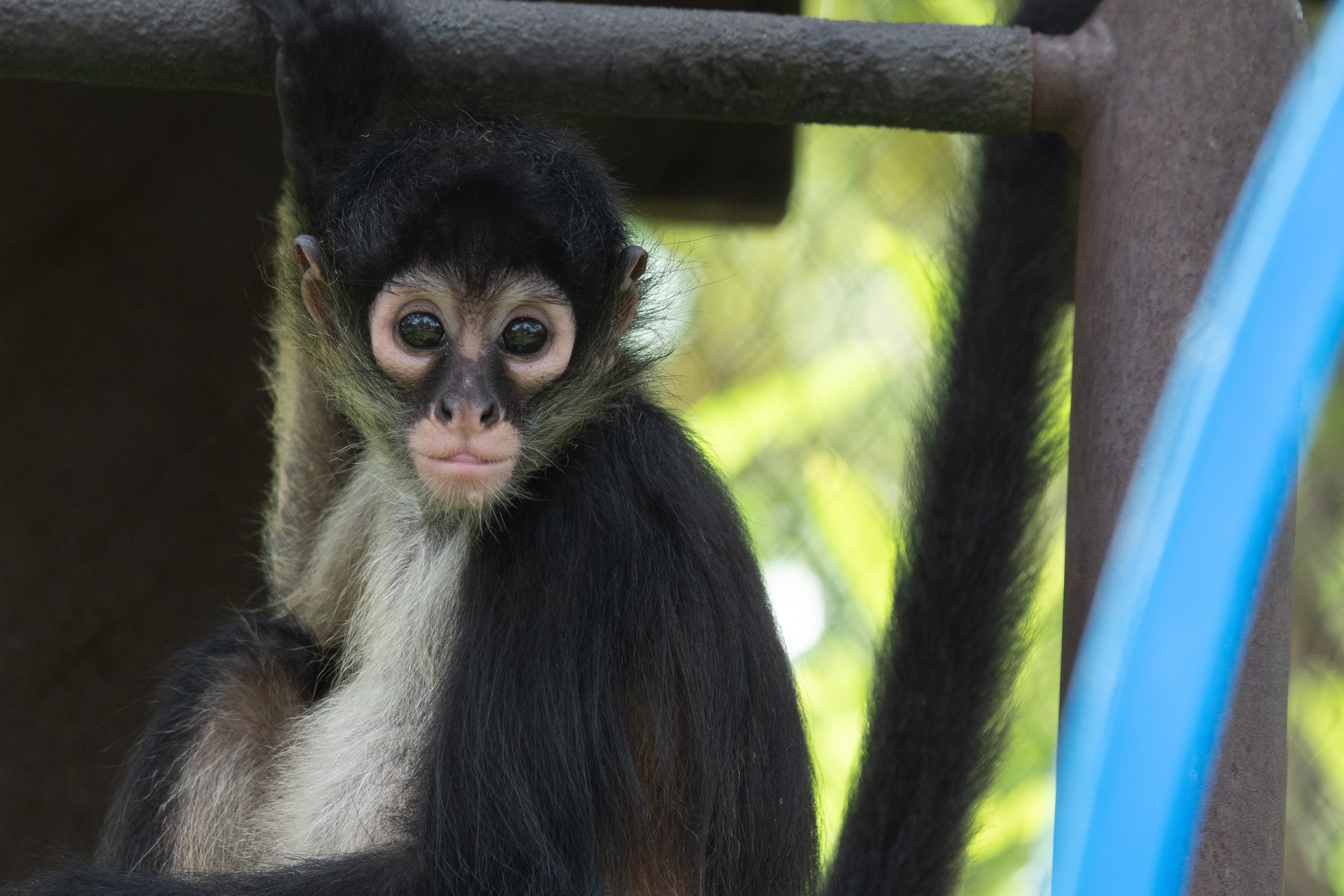ST. LOUIS — Four endangered Mexican spider monkeys seized from smugglers near the U.S. southern border have found a home at the Saint Louis Zoo where staff hopes their story can spread awareness about the devastating illegal wildlife trade.
Federal authorities in spring 2024 seized the monkeys as infants in three separate confiscations. Each was likely poached from the wild to be sold as an exotic pet, becoming a victim of a global criminal network that typically kills the infants’ mothers during capture.
“This has to stop. These monkeys remind us that the sale of primates as pets must end once and for all,” said Regina Mossotti, Vice President of Animal Care at the Saint Louis Zoo. “Buyers may not realize it, but the illegal wildlife industry causes incredible suffering to so many animals. It not only harms endangered species, it also puts their native habitats in peril.”

After their seizure, the four monkeys were initially taken to Gladys Porter Zoo in Brownsville, Texas for evaluation and medical care. Sadly, returning them to the wild was not possible due to the species’ complex social structures and the likelihood of re-poaching.
The monkeys arrived at the Saint Louis Zoo in April 2025 where they were gradually introduced to resident adult female spider monkey Patty. They made their public debut in Michael and Quirsis Riney Primate Canopy Trails in July. While they are now thriving in their new long-term home, these young primates are still impacted by their early capture. One still carries a piece of birdshot lodged in her body. All four were hand-reared as infants and continue to need specialized care. And while spider monkeys are a highly social species, they each grew up without their mothers or family bonds.

Keepers gave the four monkeys names to reflect both their origins and personalities:
- Chico – male
- Oxomátli (oh-zoh-MAHT-lee) – female
- Xóchitl (SO-cheel) – female
- Chula – female
“With everything these monkeys have gone through at such a young age, they will require specialized care and attention for some time,” said Cinnamon Williams, General Curator at Saint Louis Zoo. “It’s rewarding to watch them make progress and build trust with us, but their recovery reminds us every day why the primate pet trade must end.”
The Saint Louis Zoo has joined ongoing efforts to curb the pet primate trade in the U.S. by supporting passage of the Captive Primate Safety Act, a bill that would regulate the possession of non-human primates for use as personal pets. Read more about the bill here.

Efforts to end wildlife trafficking
Mexican spider monkeys are one of the most heavily trafficked primate species crossing the U.S.-Mexico border. Demand for the illegal pet trade and spider monkeys’ small size—just 13 to 17 pounds—make them a frequent target for smuggling. It is not legal in the United States for any primates to be imported for the commercial pet trade.
Classified as endangered by the IUCN Red List, Mexican spider monkeys continue to be threatened by wildlife trafficking and habitat loss in their native ranges in Mexico and Central America.
Mexican spider monkeys are not legally protected under the Endangered Species Act, but they are considered at risk in Appendix II of the Convention on International Trade in Endangered Species of Wild Fauna and Flora (CITES).
Launched in October 2023 in partnership with the U.S. Fish and Wildlife Service (the Service), the Wildlife Confiscations Network is dedicated to ensuring the rapid placement and high-quality care of animals rescued from the illegal trade. Since its inception, the Network has facilitated the placement of 4,600 animals, including nearly 100 spider monkeys, into safe, expertly managed environments—including facilities accredited by the Association of Zoos and Aquariums (AZA) and other rigorously vetted Network partners.
Introduced into the House of Representatives in May 2025, the Wildlife Confiscations Network Act builds on this pilot program along the southwestern U.S. border and would establish a national cooperative and coordinated response for the care and wellbeing of wildlife confiscated from illegal trade at United States border crossings and ports of entry. Endorsed by 75 organizations, the Wildlife Confiscations Network Act will codify all aspects of this effective law enforcement program and enable the Network to expand across the country. Read more about the bill here.
Across species, nearly 50,000 live animals were seized or abandoned at U.S. ports of entry from 2015 to 2019, according to an AZA analysis of Fish and Wildlife Service data.
“High global demand for exotic pets fuels both the illegal and unsustainable trade of millions of animals—many of which suffer and die in the process,” said Sara Walker, AZA senior director of wildlife trafficking. “If we fail to act swiftly—both to protect these confiscated animals and to reduce consumer demand—wildlife trafficking could drive many endangered species to extinction within our lifetime.”
The Saint Louis Zoo is a gold member of the Wildlife Trafficking Alliance, a collaboration between AZA zoos and other organizations working to reduce, and eventually eliminate, the illegal trade of wildlife and wildlife products.
Resources
- If you suspect that someone is trafficking wildlife, contact the U.S. Fish and Wildlife Service Tips line at www.fws.gov/wildlife-crime-tips.
- Find educational resources on the dangers of the exotic pet trade through AZA’s “Not a Pet” campaign at notapet.net.
About Saint Louis Zoo
Home to 12,000 animals, representing nearly 450 species, the Saint Louis Zoo is recognized worldwide for its innovative approaches to animal care and management, wildlife conservation, research and education. One of the few free zoos in the nation, the Saint Louis Zoo is the most visited attraction in the region. Accredited by the Association of Zoos and Aquariums (AZA), the Saint Louis Zoo is part of an elite group of institutions that meet the highest standards in animal care as well as provide fun, safe and educational family experiences. The Saint Louis Zoo and other AZA-accredited institutions collectively dedicate millions of dollars annually to support scientific research, conservation and education programs. For more information, visit stlzoo.org.

